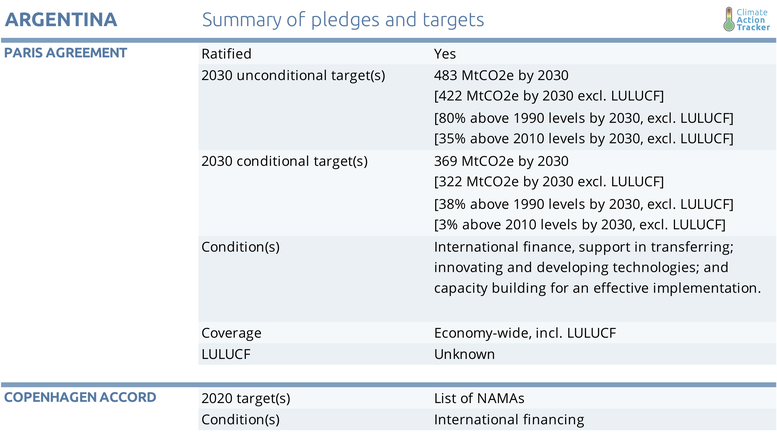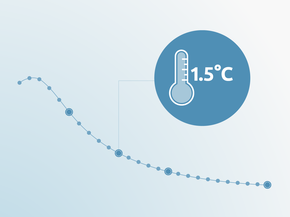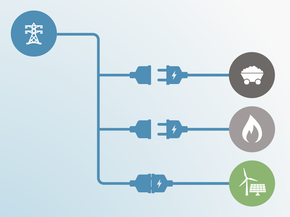Pledges And Targets
Summary Table

Paris Agreement targets
Argentina presented a revised NDC in November 2016. It includes two absolute emissions reduction targets for 2030 (Government of Argentina, 2016a).
The unconditional target limits emissions to 483 MtCO2e in 2030 including LULUCF and, according to our calculations, to 422 MtCO2e in 2030 (excl. LULUCF and calculated using Global Warming Potentials (GWP) from the IPCC Fourth Assessment Report (AR4)). This unconditional target is equivalent to 35% above 2010 levels and 80% above 1990 levels excluding LULUCF.
The conditional target, including LULUCF, limits emissions to 369 MtCO2e in 2030 and, according to our calculations, to 322 MtCO2e in 2030 (excl. LULUCF, calculated using GWP from IPCC AR4). This is equivalent to a 3% increase above 2010 levels and 38% above 1990 levels, excluding LULUCF.
In comparison to the revised NDC, the original INDC target was a formulated as a reduction below business-as-usual (BAU), and led to higher emissions levels. Argentina also updated its method for calculating the historical data it used to determine the target levels of the NDC (Ministry of Environment of Argentina, 2016). The revision of the NDC led to an increase of ambition of the target. For more detail on the original INDC, see our 2015 assessment.
CAT ratings are based on emissions excluding the LULUCF sector. To obtain the NDC emissions level excluding LULUCF, the CAT assumes that the share of the LULUCF emissions in 2030 will be similar to the share of these emissions in the NDC’s BAU scenario.
2020 pledge
Argentina submitted a list of unilateral and supported mitigation actions being undertaken across the energy efficiency, renewable energy, biofuels, forest management and waste management sectors. According to the submission “these initiatives have a direct and positive consequence in the emission reduction of GHG, contributing to the ultimate objective of the Convention” (Secretariat of Environment and Sustainable Development, 2010)
Further analysis
Latest publications
Stay informed
Subscribe to our newsletter






